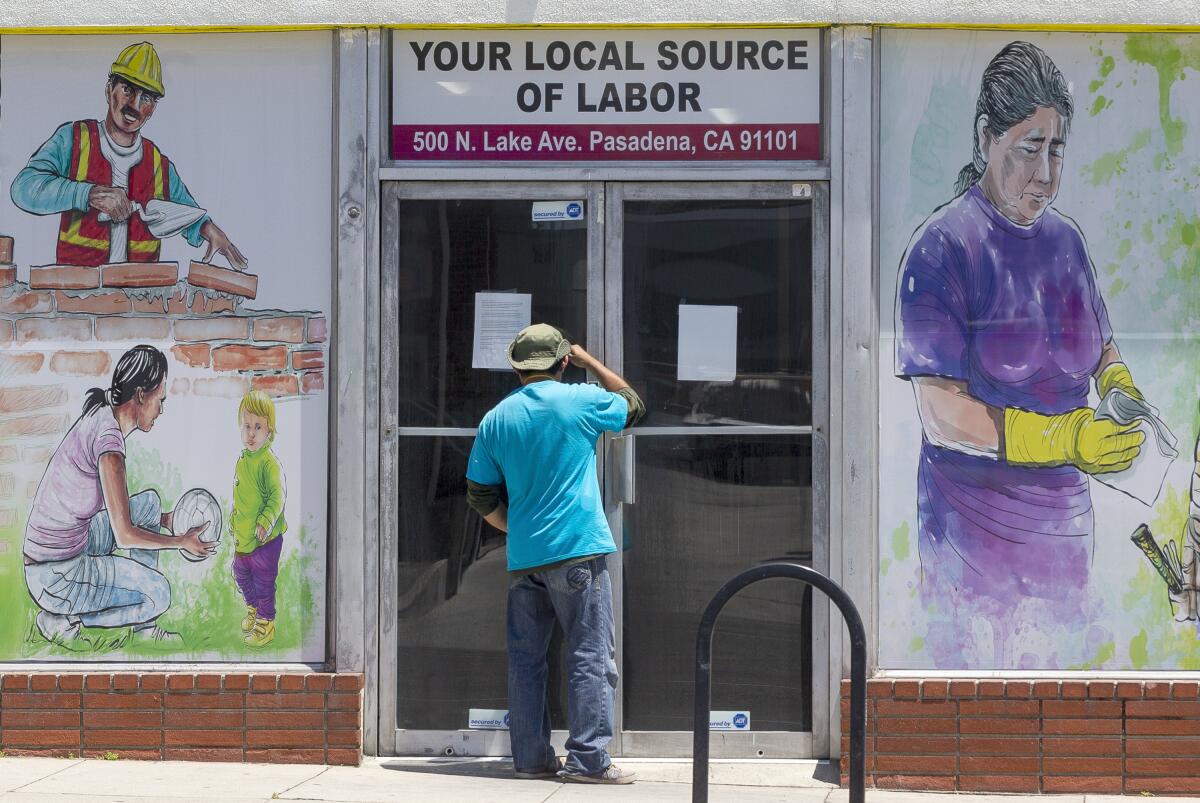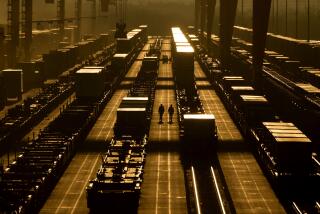Opinion: Record-breaking increase in jobs? Sure, but the economy is still reeling

As much as you might like the sound of “biggest one-month jobs gain ever,” it’s probably something you never want to hear.
Because when the Bureau of Labor Statistics reports a record-setting number of hires, as it did Friday, that’s just a hint of light at the end of a really dark tunnel. Although healthy economies produce lots of jobs, the really big gains in employment have been when the economy is clawing back from a deep downturn. Similarly, some of the biggest increases in U.S. gross domestic product have come after big contractions.
So, putting Friday’s report in context, it’s great to see increased employment in multiple industrial sectors, most notably leisure and hospitality, construction, education and health services, and retail. The one sector that was still shedding jobs at a breakneck pace was government, and, according to BLS Commissioner William W. Beach, that was largely because schools were still shuttered.
Calling 911 is not a free mediation service for white people to get the upper hand in banal disputes with people of color.
But we have a long, long way still to go, with almost 21 million people unemployed (according to the BLS’ survey of employers) and 10.6 million more stuck in part-time jobs when they’d rather be working full time. A year ago, those numbers were 5.9 million and 4.3 million, respectively.
Economists had hoped early on that we might see a rapid bounce-back from the contraction. Once we’d vanquished COVID-19, the thinking was, we’d all go back to work and commerce would hum again. But it proved hard to flatten the curve of the pandemic — stupid coronavirus! — and governments relied for weeks on blunt-force solutions like broad stay-at-home orders, unable to pull together the testing, contact tracing and quarantining resources necessary for a more targeted approach. The wounds to businesses and their employees have been deep.
States started lifting their pandemic-related restrictions in early May, generating a fair amount of hand-wringing by public health experts and pundits like me. And some of those states have seen their COVID-19 caseloads increase as a result. But as Friday’s report shows, the country also saw a sharp uptick in employment.
Can it continue? One obvious factor is persistent spreading of the coronavirus. If the reopening of stores and offices or the mass demonstrations protesting George Floyd’s death in police custody in Minneapolis prompt widespread and significant outbreaks, states could reimpose restrictions on workplaces and we’d be contracting again.
The retired Marine general and former Defense secretary says what congressional Republicans are afraid to admit: Trump is an unstable menace.
One less obvious factor is the permanent changes wrought by the pandemic. After examining current business survey data and the results of past recessions, researchers at the University of Chicago concluded that 42% of the short-term job losses will become lasting ones. “For many firms, cash-flow problems today will become insolvencies in the future, and ‘temporary’ layoffs will become permanent,” the authors wrote. “The longer it takes to bring the economy back on line, the larger the fraction of recent layoffs that will turn out to be permanent.”
The authors cited three broad factors for the long-term losses: the pandemic is changing the demand for goods and services, some companies are simply too weak to survive the shock, and concerns about infection are causing changes in how many companies do business. The infection concerns are likely to endure for a while, the authors wrote. “The potential for customer (and employee) concerns about infectious disease transmission to alter retail formats, restaurant designs, and the delivery of many medical, professional, personal and business services suggest that the reallocative consequences of the COVID-19 pandemic will continue to play out for many months and years to come.”
“Reallocative consequences” is another way of referring to shifts in hiring and employment that inevitably accompany recessions and recoveries. And they’re already underway, with the pandemic causing a boom among retailers and delivery companies that tend to the needs of people sheltering in place, while taking a toll on workers whose jobs could be replaced by technology. Those reallocations could be reversed post-coronavirus, but if the long-term result is a move from higher-paying jobs in, say, manufacturing and professional services to lower-paying jobs in retail and hospitality, that’s not a good thing. On the other hand, if laid-off workers retrain and acquire new and more valuable skills, the shift could go in the other direction.
Let’s insert the usual caution here: Employment reports are slightly out-of-date snapshots, so it’s best to look at the trends they reveal over several months. Friday’s report suggests that the U.S. economy has bottomed out and is bouncing back, earlier than many observers expected. Whether the recovery is underway in earnest or May was just a blip will be revealed over the next few months.
More to Read
A cure for the common opinion
Get thought-provoking perspectives with our weekly newsletter.
You may occasionally receive promotional content from the Los Angeles Times.









